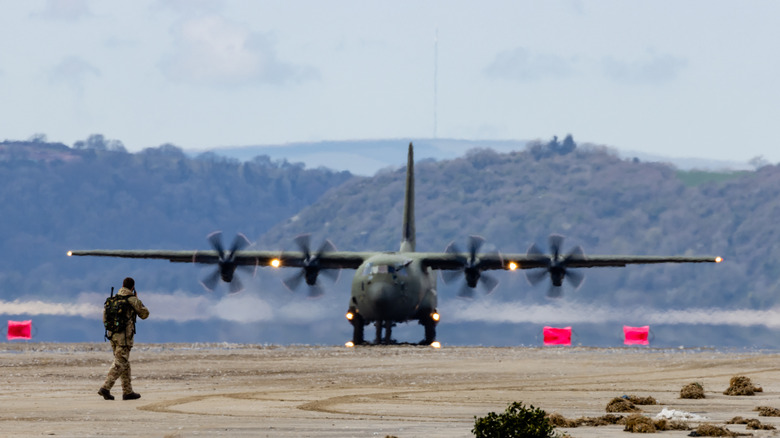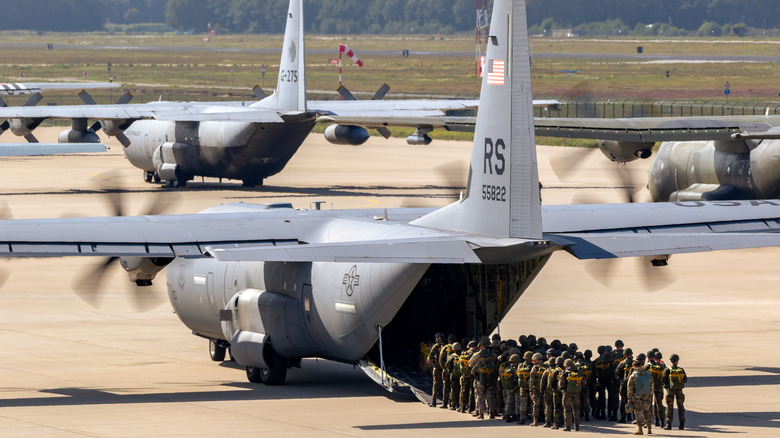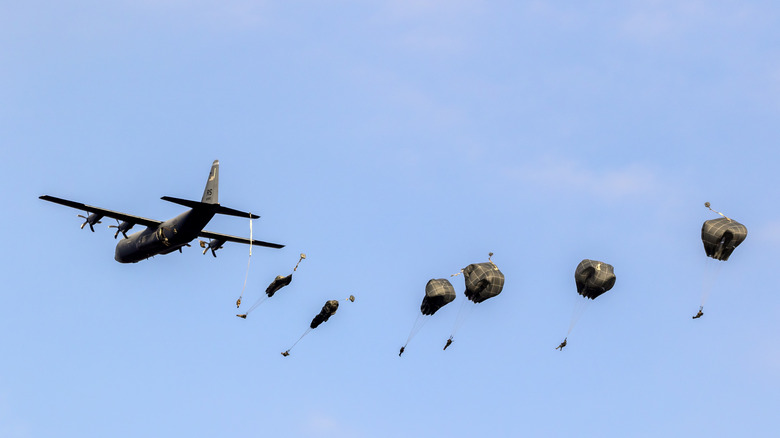How Mexico's Air Force Is Modernizing Its Fleet With A C-130J Super Hercules
In an increasingly hostile world, it makes sense for sovereign nations to bolster their defenses, whether through ground forces, sea, or air. Diplomatic pressure from organizations like NATO can push countries towards increasing their army budgets, or some, like Mexico, do so of their own volition. This North American nation has aims of shoring up its air force's capability in the form of procuring new aircraft — specifically the Lockheed Martin C-130J Super Hercules. It is a massive transport vessel, still powered by four propellers, often used in strategic airlift operations or civil disaster response. Consider it the Ford F-150 of military transport planes, with thousands of these reliable workhorses being produced over the last 60-odd years, since its debut in the U.S.
Transporting personnel and equipment is the name of the game with the C-130J, and Mexico's current air transport fleet is in desperate need of an update, with some planes in operation since the Nixon administration. As such, Mexico is actively modernizing its fleet with the delivery of a brand new Super Hercules slated for November, 2028. This is especially a big deal if you consider the cost of these aircraft, relative to Mexico's GDP. In fact, these giants of the sky are so costly that the U.S. Air Force opted to save a damaged C-130J rather than junking it to buy a replacement.
The right choice
Sustaining an air fleet that is almost 60 years old is not only costly, but it simply makes little sense logistically, with no advantage over procuring new planes. While C-130J is indeed an older plane, it is modernized much more than any of the old transport craft Mexico's air force currently uses. Even with older C-130s operated by the U.S. Air Force, the time to fully repair them can take upwards of several months, illustrating the importance of having multiple reliable planes.
Mexico is one of 23 other countries and 28 operators using the C130-J currently with legacy and newer models, proving it to be a trusted military investment. Its impressive payload, take-off weight, and range capabilities are crucial in the event of natural disasters or assisting in counter-narcotics and security operations around the country. The Super Hercules has several different configurations and variations in operation in the United States, for example, showing its versatility. Models like the HC-130J Coast Guard, HC-130J Combat King II, C-130J-30 Super Hercules, KC-130J Tanker, and LM-100J Commercial Freighter, MC-130J Commando II, are purposed for different tasks, unified by the plane's reliability and proven capability. This further solidifies that the Mexicans made the right choice with the C-130J over competitors like the Embraer C-390, with less global buy-in and fewer variants.
A modern Super Hercules
The new C-130J Super Hercules comes equipped with four extremely powerful Rolls-Royce AE 2100D3 turboprop engines, each coupled with six-blade, composite Dowty propellers. This replaces the older T56 engines and four-bladed props found on legacy Super Hercules models like the C-130H. Inside the cockpit of the new C-130J, the old school analog flight deck is replaced with a fully integrated suite of digital avionics, replete with multifunctional color displays and night vision compatible head-up displays (HUDs). The new Super Hercules also features fully integrated defensive systems and low-power color radar. This array of automation electronics enables the plane to be helmed by only two pilots, as opposed to four to six crew typically required for legacy models.
These advancements allow the transport aircraft to fly 21% faster, bust through the clouds with a 50% faster climb rate, and have an overall 40% increased operational range. In essence, it modernizes the C-130. Furthermore, the Mexican air force will benefit from a 29% increase in takeoff thrust, while having a 15% reduction in total fuel usage. That means savings for the government by lowering its operating budget for the Super Hercules, allowing for more funds to be allocated towards future repairs and training missions. Beyond the number crunching, it's clear that the Mexican air force has made a wise decision in pushing toward modernizing its fleet, one plane at a time.


